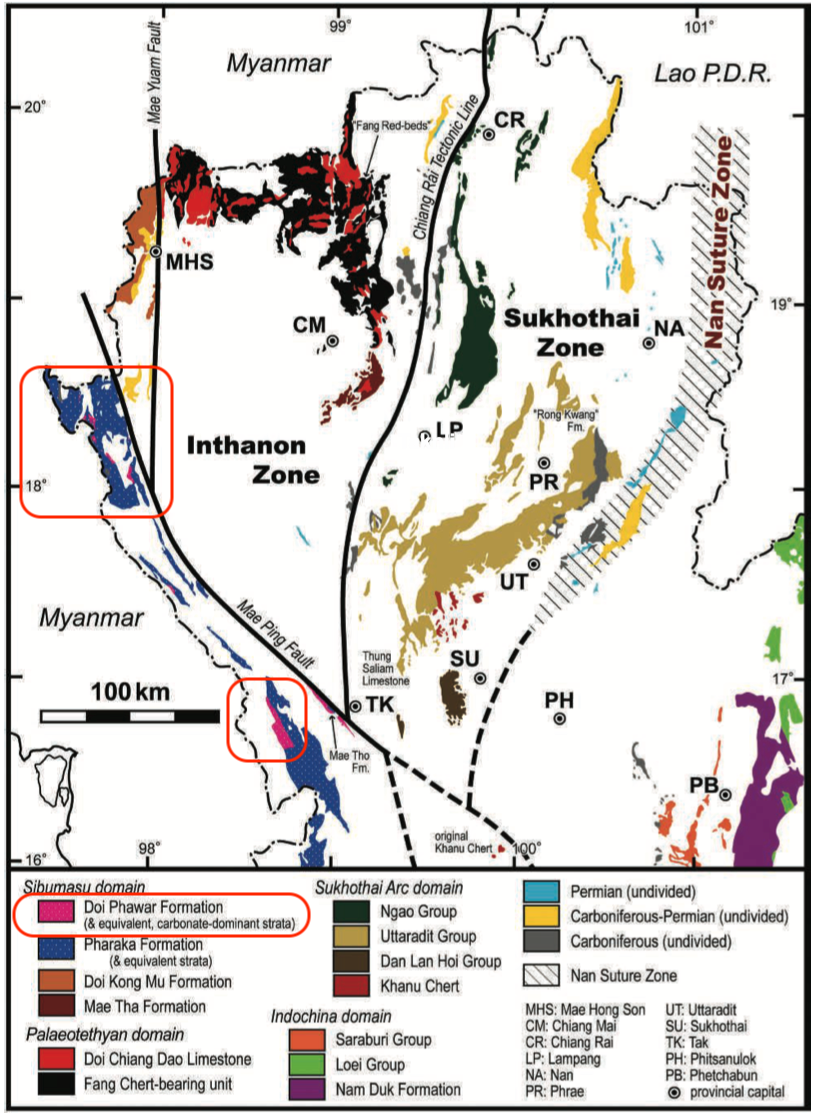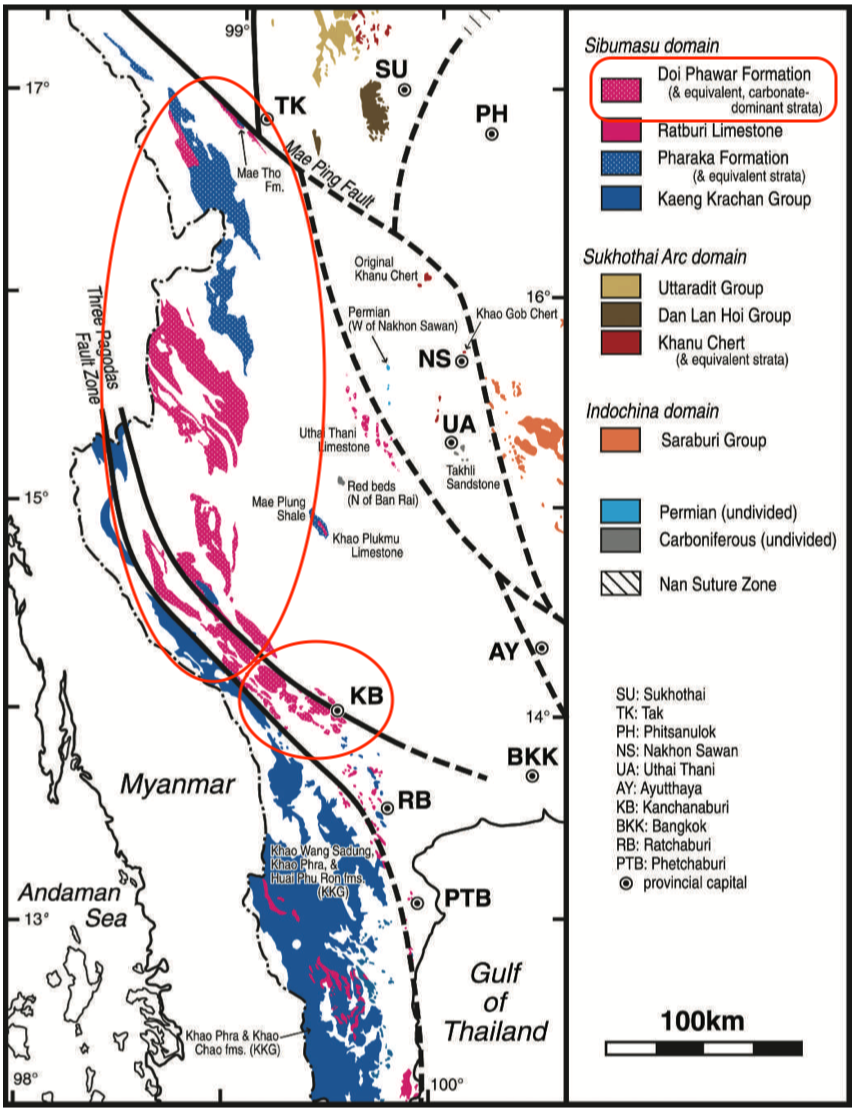Doi Phawar Fm
Type Locality and Naming
Mae Sariang-Mae Sot-Umphang region. Assigned to strata exposed between Km 62 and Km 67 along the Tak–Mae Sot Highway (Oeno & Charoentitirat, 2011).
Synonym: หมวดหินปนู พระวอ ; Pawa Limestone, Phawa Limestone; units ‘p1–2’ and ‘p3’ of the Ratburi Group; or the Pha Woh Limestone (as used in Lexicon of Stratigraphic Names of Thailand of 2013); Pha Woh Limestone Fm, Pawa Limestone Fm,
Lithology and Thickness
The lower carbonate part (dolomitic limestone) is c. 680 m thick and the upper siliciclastic portion is c. 230 m thick.
Relationships and Distribution
Lower contact
Pharaka Fm (conformable)
Upper contact
Mae Moei Gr (Triassic, with a possible unconformity). Regionally in Mae Sariang - Kanchanaburi Basin, the early Triassic are unnamed Red Beds, followed by the Sae Sariang Fm of middle Triassic.
Regional extent
Mae Sariang-Mae Sot-Umphang region = Western half of the Western Region of Sibumasu (south of Mae Ping Fault, north of Three Pagoda Fault).
Equivalence: The lower carbonate member of the Doi Phawar Formation is almost equivalent to the Sai Yok Fm of the Mae Nam Khwae Gr, distributed extensively in Western Thailand, and the upper siliciclastic member is probably equivalent to the Tha Madua Fm of the same group (Fig. 5.15 in Oeno & Charoentitirat, 2011). Correlates to the Kamawkala Limestone Fm in Myanmar (Stokes, 1988)
GeoJSON
Fossils
Foraminiferal assemblage: Sumatrina, Neoschwagerina, Dunbarula, Yangchienia, Kahlerina and several others suggesting a younger Middle Permian (late Murgabian or early Midian) age. Black lignitic shale in the upper part of the Doi Phawar Formation yielded the palynomorphs: Plicatipollenites sp., Cordaitina gunyalensis and Calamospora landiana of which the latter two taxa indicate a Late Permian–Early Triassic. (Oeno & Charoentitirat, 2011)
Age
Depositional setting
Carbonate shelf facies deposited on continental margin.
Additional Information
Remarks: Earlier workers had referred to all or part of this formation as the Pawa Limestone), units ‘p1–2’ and ‘p3’ of the Ratburi Group or the Pha Woh Limestone.

